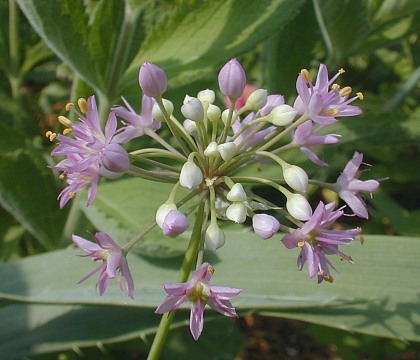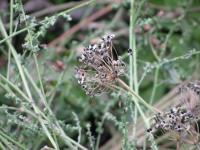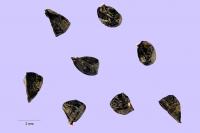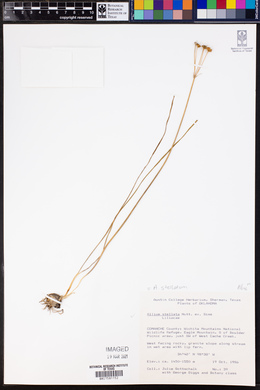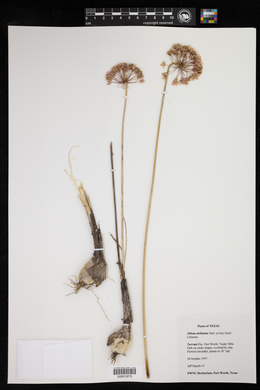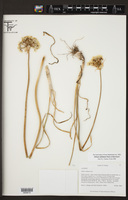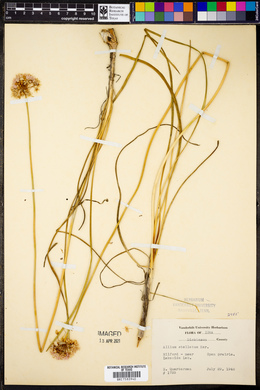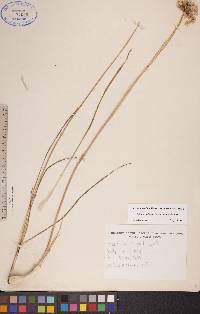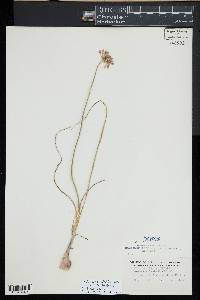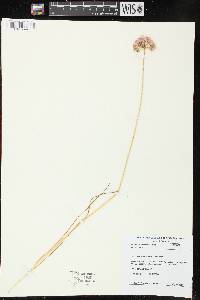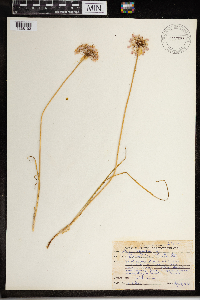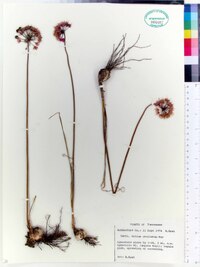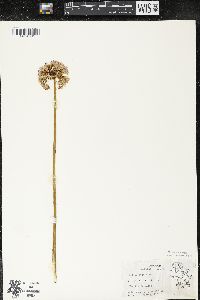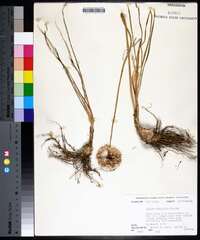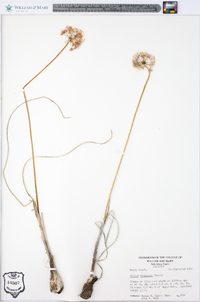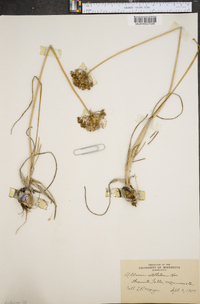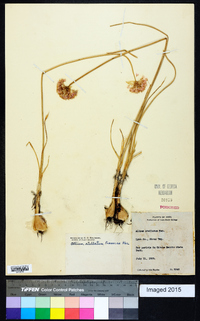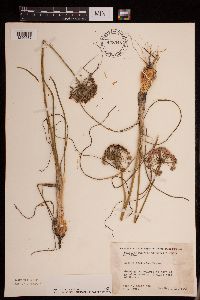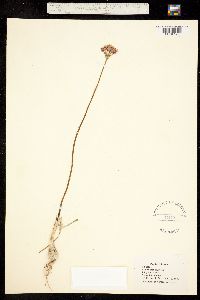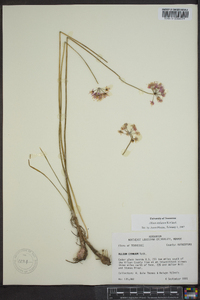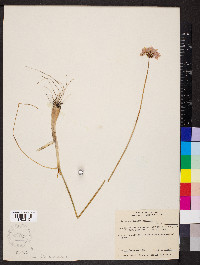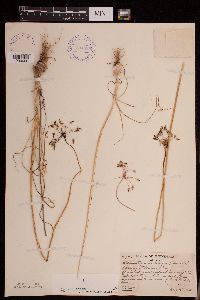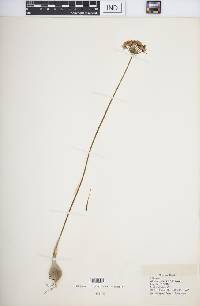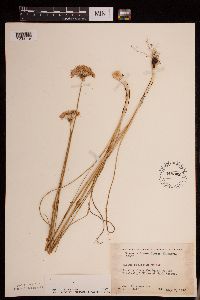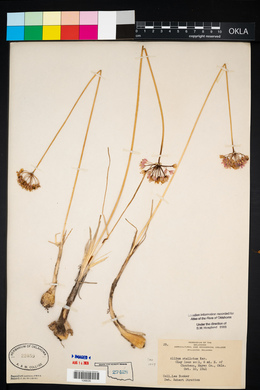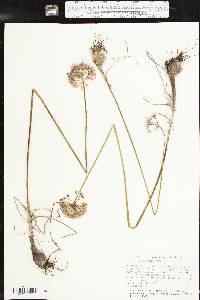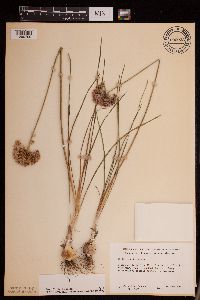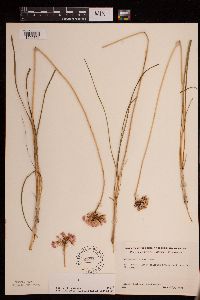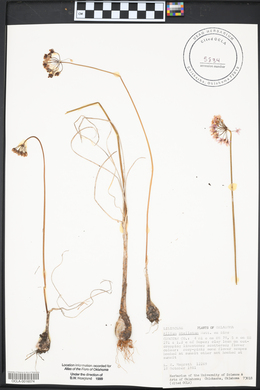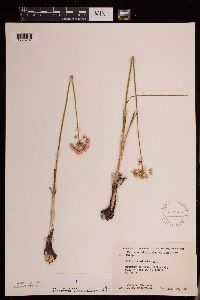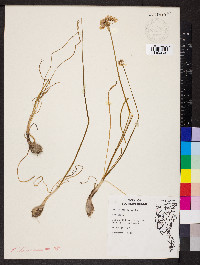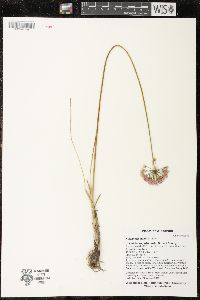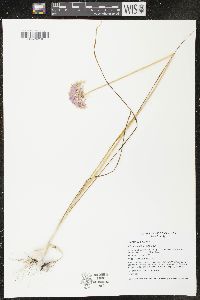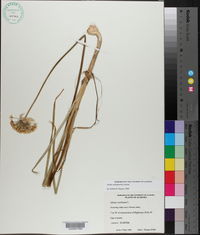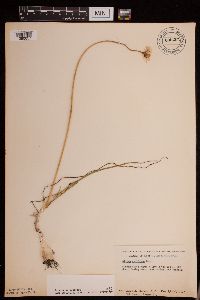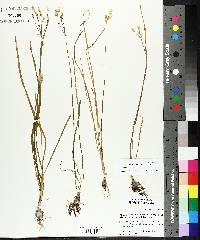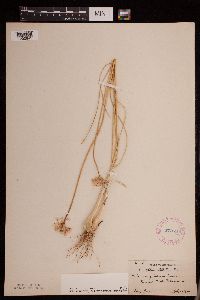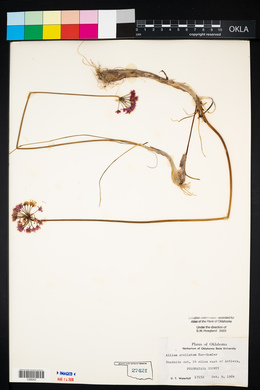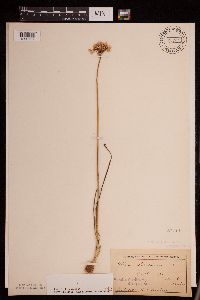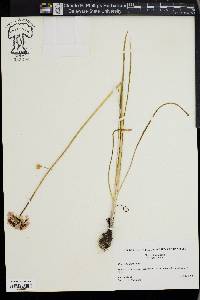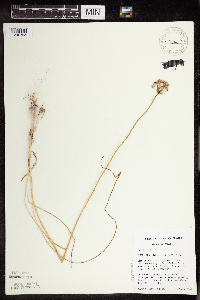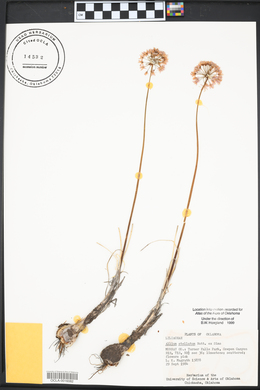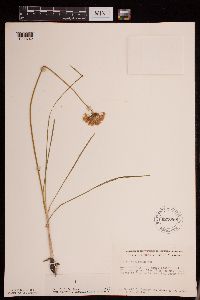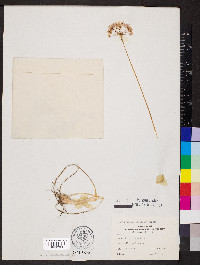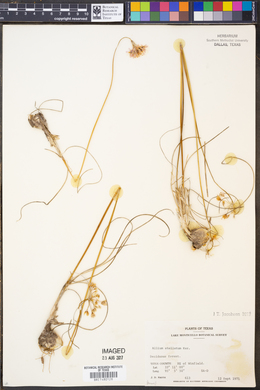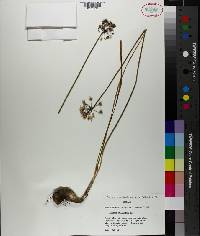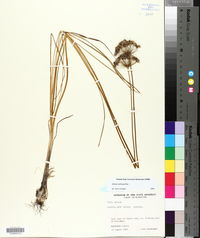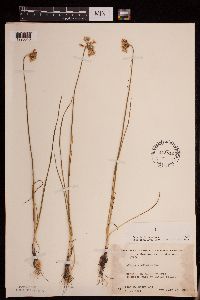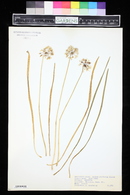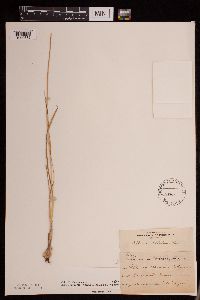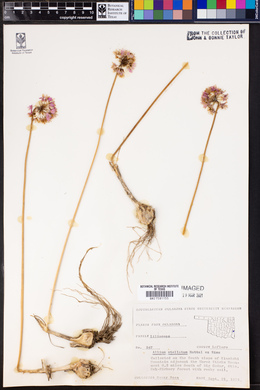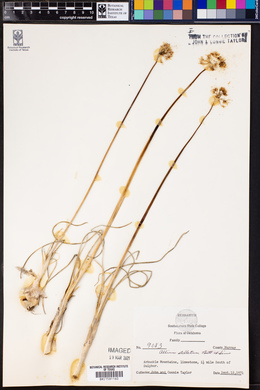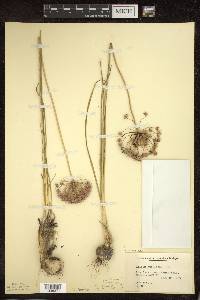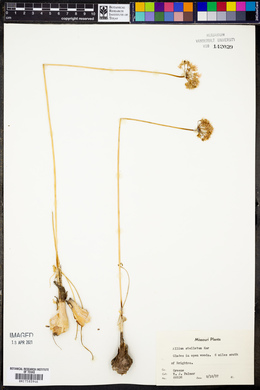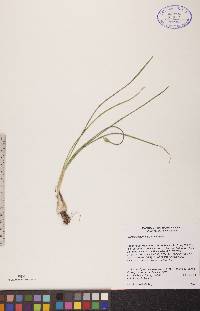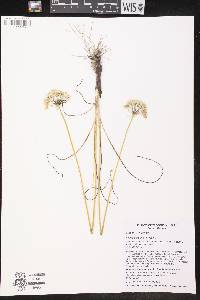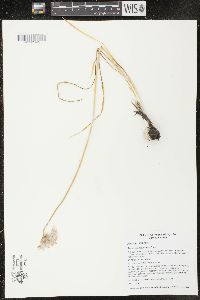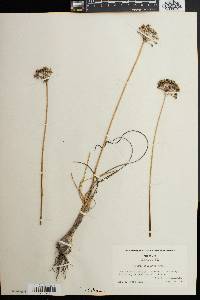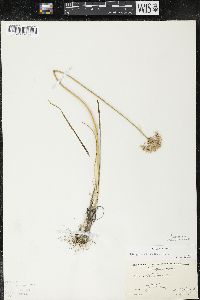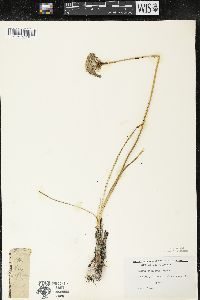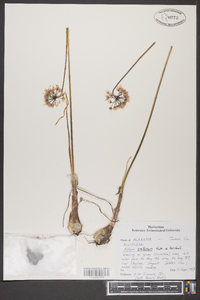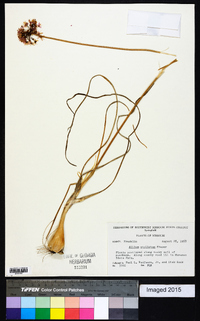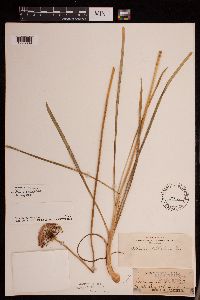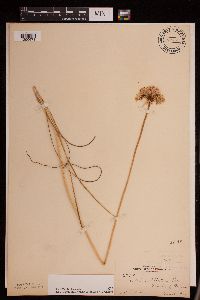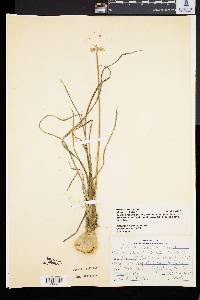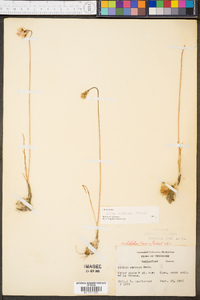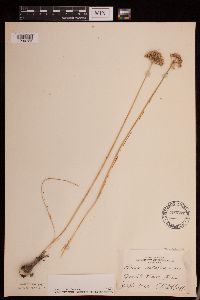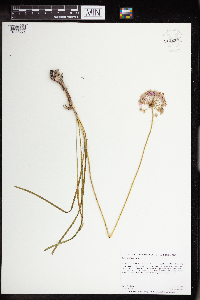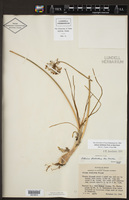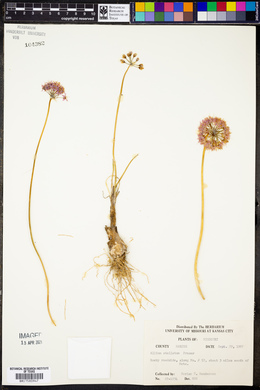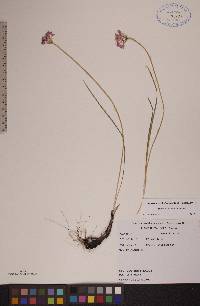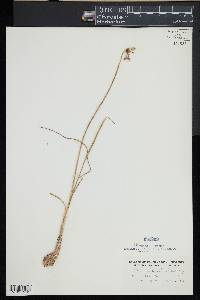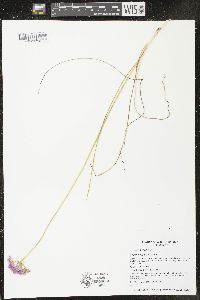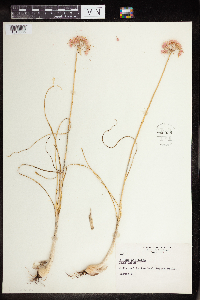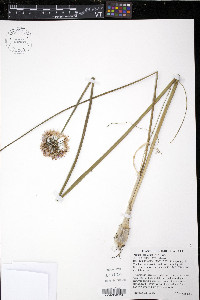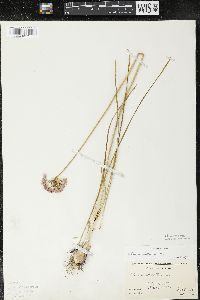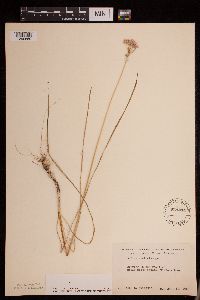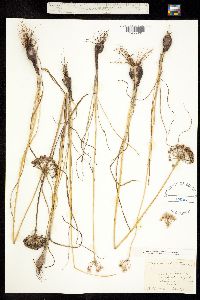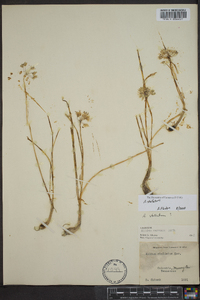Allium stellatum
|
|
|
|
Family: Amaryllidaceae
Autumn Onion, more...Prairie Onion
|
Bulbs 1-5+, usually clustered, often short-rhizomatous at base, rhizome not stout or iris-like, ovoid, 2-4 × 1-2.5 cm; outer coats enclosing 1 or more bulbs, grayish or brownish, membranous, fibers parallel, few, or sometimes reticulate, cells obscure, finely meshed; inner coats whitish to pinkish, cells obscure, ± quadrate. Leaves persistent, green at anthesis, 3-5, basally sheathing, sheaths never extending much above soil level; blade solid, flat, channeled, 14-35 cm × 1-5 mm, margins ± entire. Scape persistent, solitary, erect, or, if nodding at anthesis, becoming erect, solid, terete or ± 4-angled, particularly distally, 20-50 cm × 1-3.5 mm. Umbel persistent, nodding, becoming erect, ± loose, 9-40-flowered, hemispheric, bulbils unknown; spathe bracts persistent, 2, 2-4-veined, lanceolate, ± equal, apex acuminate. Flowers stellate, 5-8 mm; tepals spreading, deep pink, elliptic-lanceolate, ± equal, withering in fruit, margins entire, apex acute, midribs not thickened; stamens exserted; anthers yellow; pollen yellow; ovary conspicuously crested; processes 6, distinct, flattened, ± triangular, margins entire or toothed; style exserted, linear, ± equaling stamens; stigma capitate, scarcely thickened, unlobed; pedicel 0-20 mm. Seed coat dull; cells minutely roughened. 2n = 14. Flowering Jul--Oct. Often on calcareous soils; 300--2200 m; Man., Ont., Sask.; Ark., Ill., Iowa, Kans., Mich., Minn., Mo., Nebr., N.Dak., Okla., S.Dak., Tenn., Tex., Wis. Perennial herb with one to five or more bulbs flowering stem 20 cm - 0.7 m tall Leaves: three to six, arising at ground level, basally sheathing, 15 - 35 cm long, 1 - 5 mm wide, flat, keeled, grass-like, stiff. Inflorescence: a dome-shaped, nodding umbel (becoming upright) of nine to forty flowers raised on a single stalk and subtended by two persistent bracts. Flowers: on 1 - 2 cm long stalks, pink, 4 - 8 mm long, star-shaped, with six spreading tepals that wither in fruit. Stamens six, exserted. Anthers yellow. Fruit: a short, rounded, three-lobed capsule. Bulbs: usually clustered, up to 4 cm tall, egg-shaped, and encased in a brownish or grayish membranous coating. Bulbs with a strong onion odor. Similar species: Allium cernuum is similar but has soft leaves and a nodding, not upright, umbel during full flower. However, since the umbel can sometimes be upright, it is a good idea to compare bulb and flower shape as well. Flowering: July to September Habitat and ecology: Rare in the Chicago Region. Has been found on a fine hill prairie and a railroad embankment. Occurence in the Chicago region: native Etymology: Allium comes from the Latin word for garlic. Stellatum means star-like. Author: The Morton Arboretum Bulb ovoid or ovoid-conic, 1.5-3 cm; stem 3-7 dm; lvs 3-6, arising together at the soil-surface, 1-2 mm wide, keeled; bracts 2, ovate or lanceolate, acuminate; pedicels slender, 1-2 cm; tep pink, ovate to oblong, 4-7 mm, obtuse or subacute; stamens equaling or surpassing the tep; filaments slightly widened below; fr 3-lobed, subglobose, shorter than the perianth, crested as in no. 4 [Allium cernuum Roth]; 2n=14. Prairies, barrens, and rocky hills; w. Ont. to Ill., w. to Sask., Wyo., and Okla. July-Sept. Gleason, Henry A. & Cronquist, Arthur J. 1991. Manual of vascular plants of northeastern United States and adjacent Canada. lxxv + 910 pp. ©The New York Botanical Garden. All rights reserved. Used by permission. From Flora of Indiana (1940) by Charles C. Deam Indiana Coefficient of Conservatism: C = null, non-native Wetland Indicator Status: n/a |

